Xylophanes haxairei
Cadiou, 1985
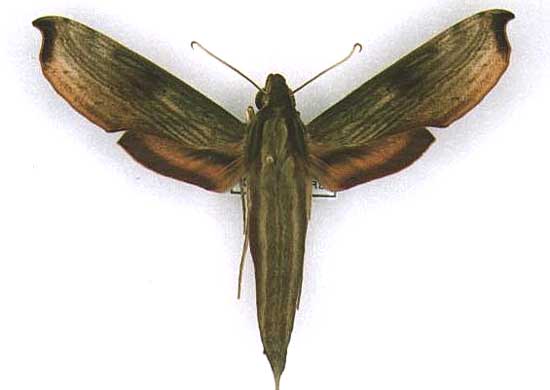
Xylophanes haxairei
This site has been created by Bill Oehlke.
Comments, suggestions and/or additional information are welcomed by Bill.
TAXONOMY:
Family: Sphingidae, Latreille, 1802 |

This site has been created by Bill Oehlke.
Comments, suggestions and/or additional information are welcomed by Bill.
TAXONOMY:
Family: Sphingidae, Latreille, 1802 |
The forewing apex is quite produced and pointed outward, with the upper 1/6 of the outer margin quite excavated before becoming slightly convex. The fw has seven diffuse, oblique lines, a small black cell spot bounded by a darker outer area, and a lighter inner area. I believe the forwing is gernally greenish in fresh species, becoming browner with age and exposure to light. The forewing tip is dark brown along the entire lunule edge of the outer margin, with the generous sufusions of lighter orange.
The thorax has a thin light center line bounded by darker lines which are outwardly bounded by lighter lines which widen as they meet the abdomen where all lines widen considerably.
The hindwing has a full length orange band bordered by dark brown.
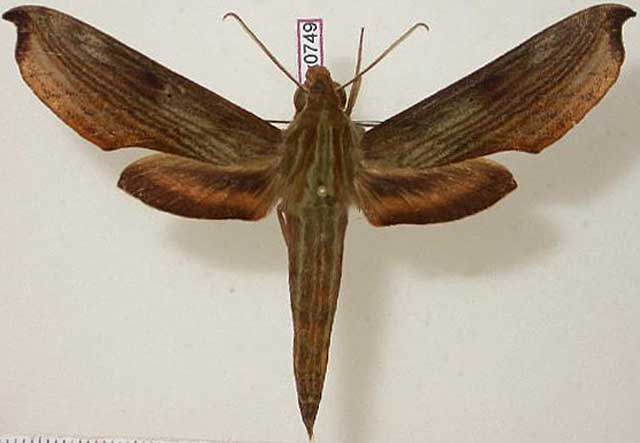
Xylophanes haxairei, 80mm, French Guiana, courtesy of Jean Haxaire.
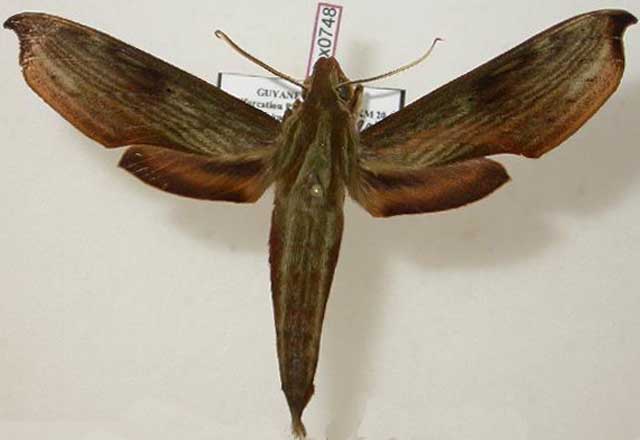
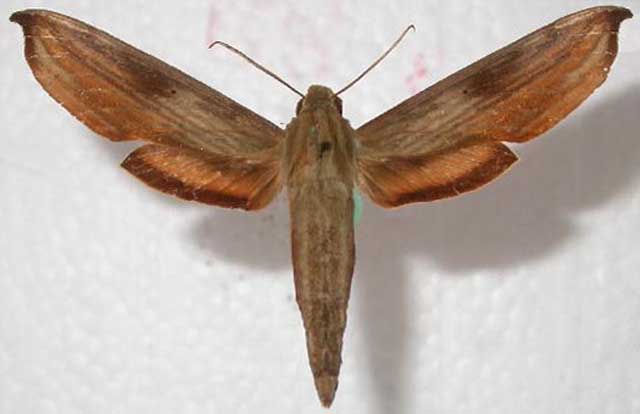
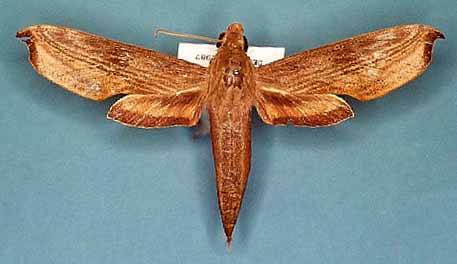
Moths probably emerge approximately one-two months after larvae pupate.
Use your browser "Back" button to return to the previous page.
Goto Main Sphingidae Index
Goto Macroglossini Tribe
Goto Central American Indices
Goto Carribean Islands
Goto South American Indices
Goto U.S.A. tables